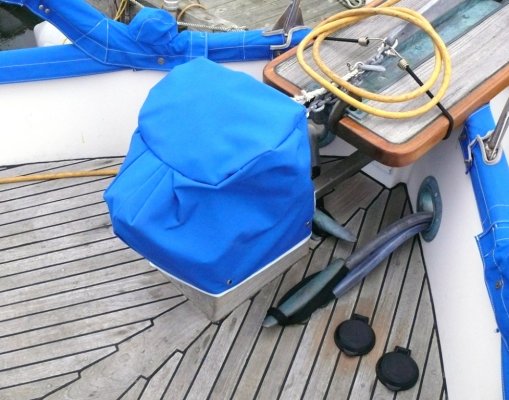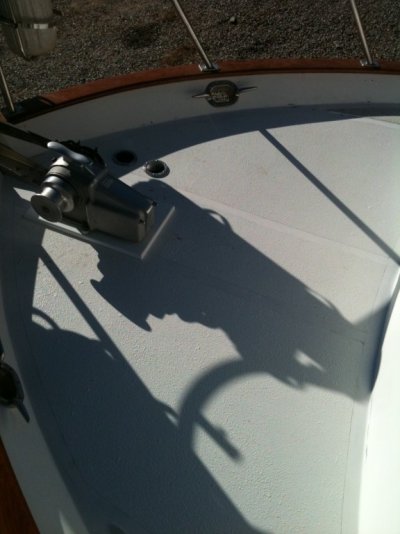markpierce
Master and Commander
- Joined
- Sep 25, 2010
- Messages
- 12,557
- Location
- USA
- Vessel Name
- Carquinez Coot
- Vessel Make
- penultimate Seahorse Marine Coot hull #6
Where are*the cleats and chocks located on your boat accompanying dock lines, anchor-chain snubber, and dinghy, etc.?
On this Seahorse Marine boat, up at the bow are a hawse hole and chock on each side.* The hawse holes accommodate bow lines and snubber.* The chocks are for the after bow springs.* These lines would be tied to a bitt.

Midship there is a cleat on each side.* Not sure yet how those would be best used beyond hanging a fender.
Near the stern on each side is a cleat for the after quarter spring and forward quarter spring.* I don't like the idea of two lines on one cleat and am considering the addition of another cleat nearby on each side.
Am also considering adding a cleat on the stern bulwark for towing a dinghy and tieing on a stern line.

Comments?
-- Edited by markpierce on Friday 14th of January 2011 06:22:22 AM
On this Seahorse Marine boat, up at the bow are a hawse hole and chock on each side.* The hawse holes accommodate bow lines and snubber.* The chocks are for the after bow springs.* These lines would be tied to a bitt.
Midship there is a cleat on each side.* Not sure yet how those would be best used beyond hanging a fender.
Near the stern on each side is a cleat for the after quarter spring and forward quarter spring.* I don't like the idea of two lines on one cleat and am considering the addition of another cleat nearby on each side.
Am also considering adding a cleat on the stern bulwark for towing a dinghy and tieing on a stern line.
Comments?
-- Edited by markpierce on Friday 14th of January 2011 06:22:22 AM






